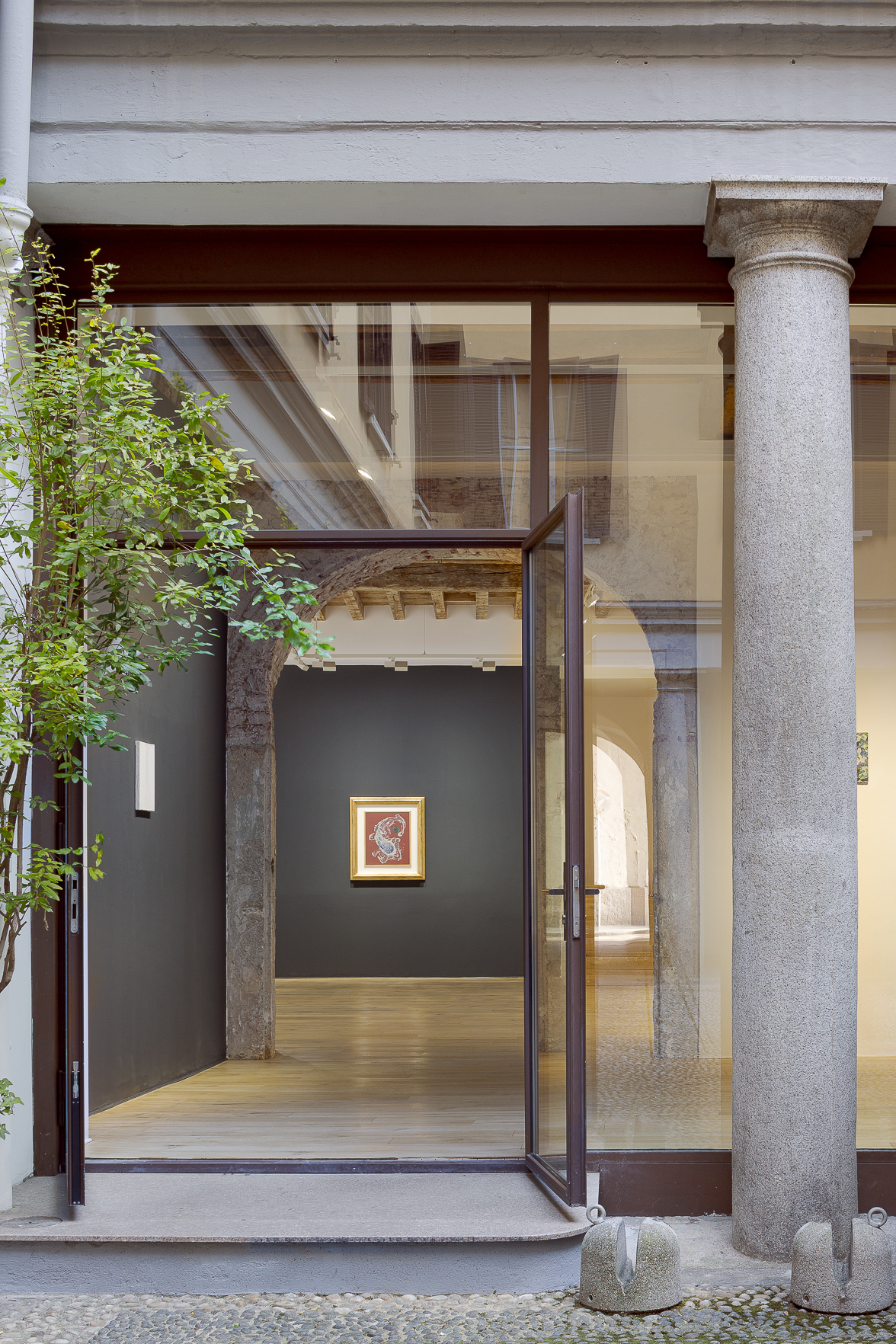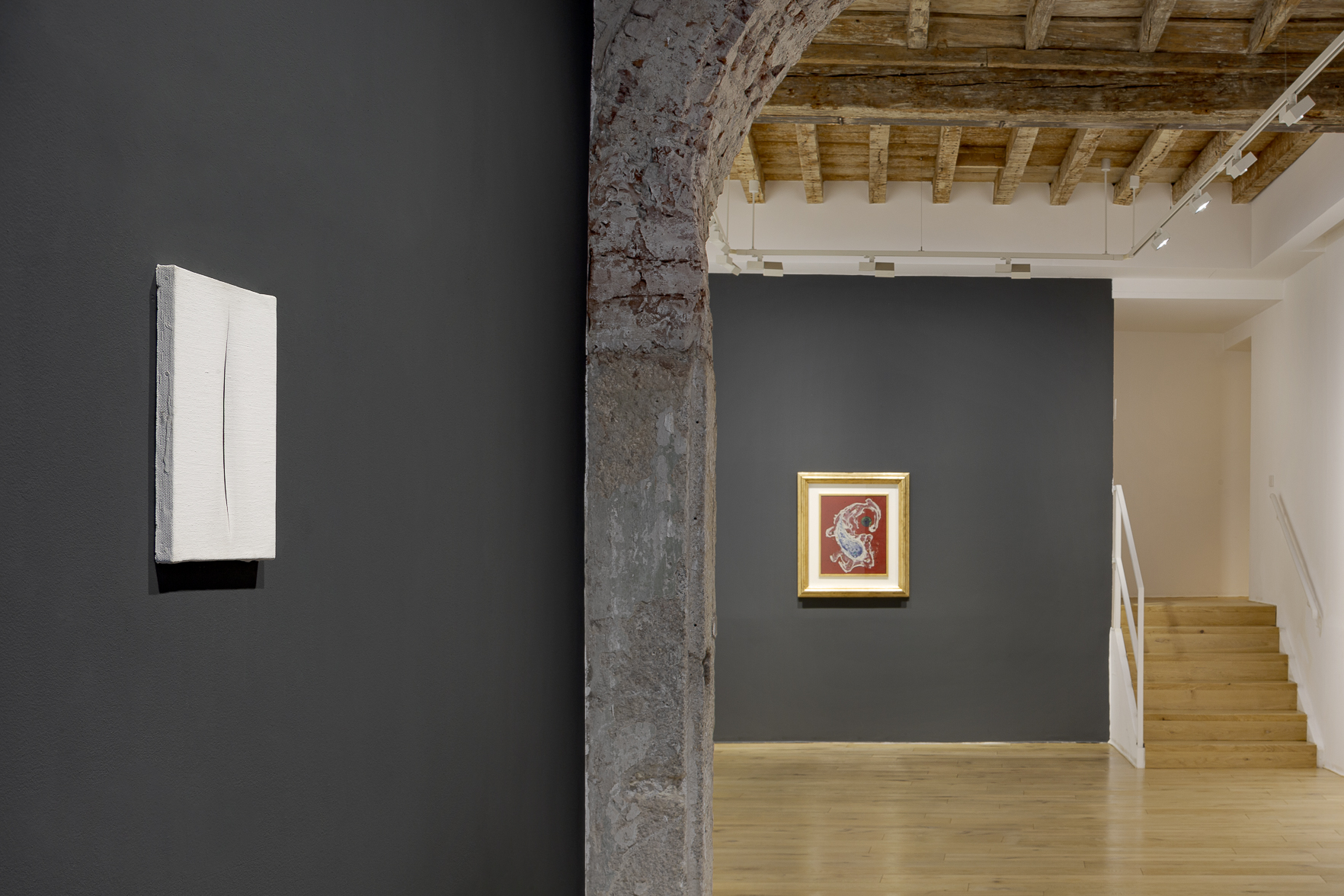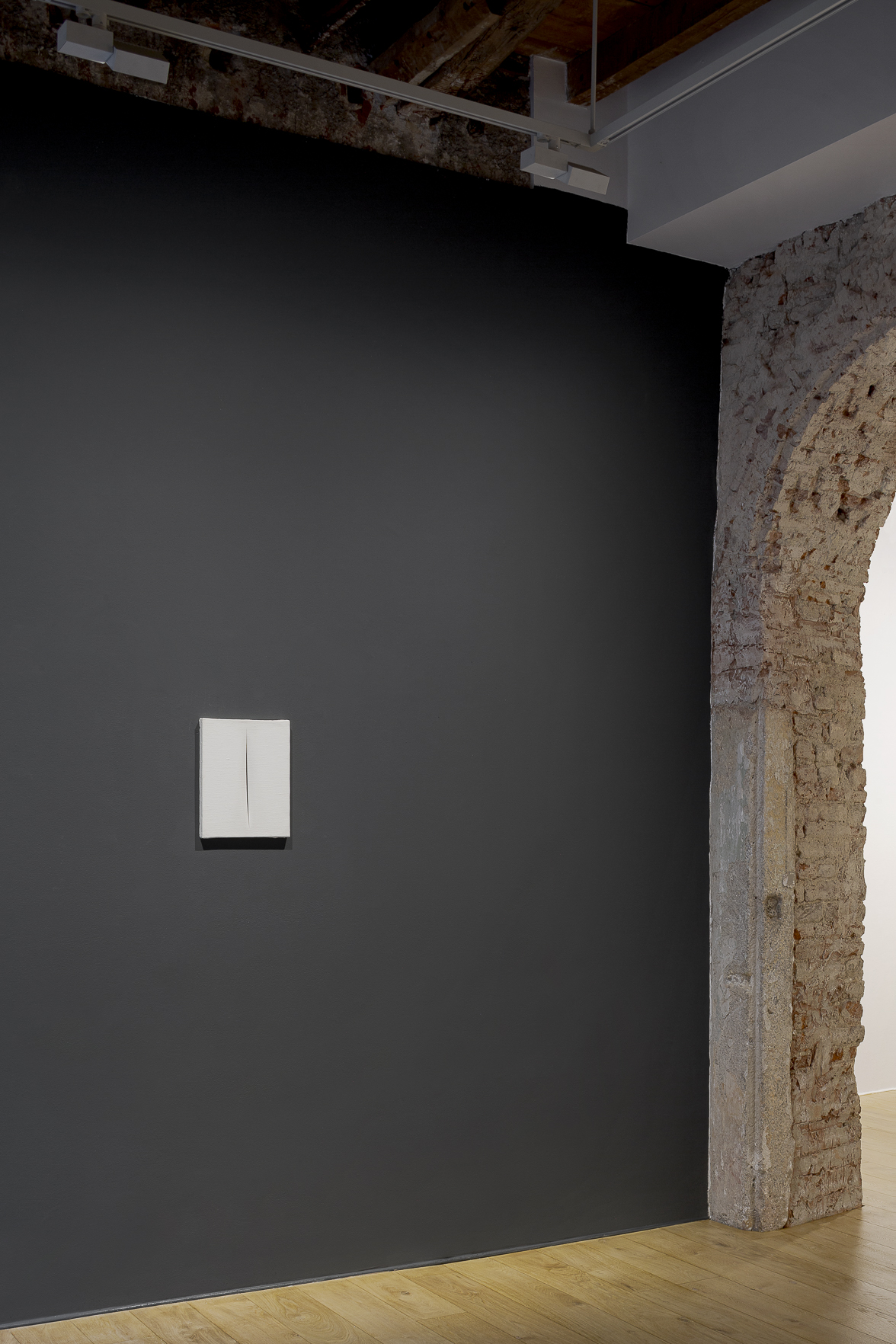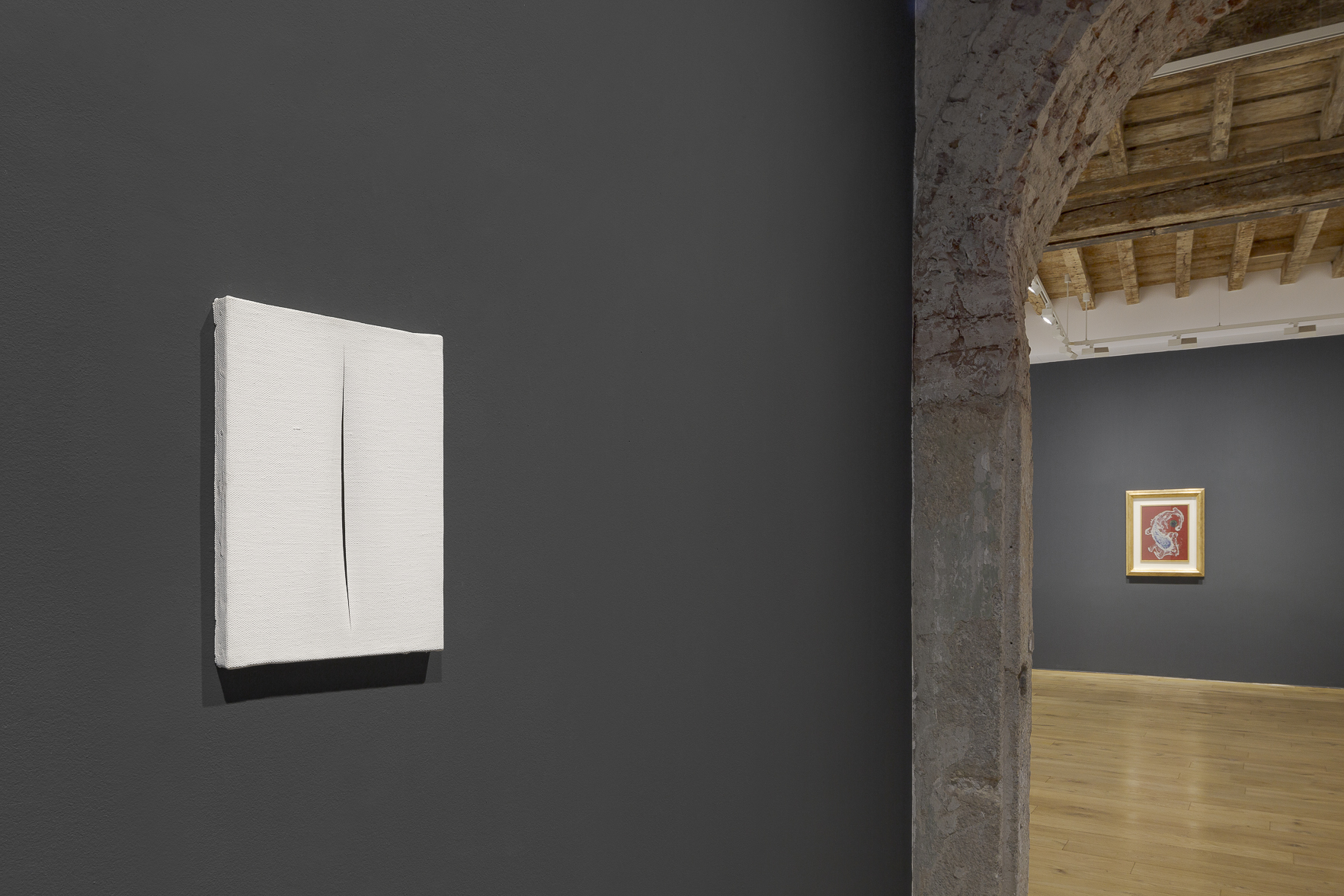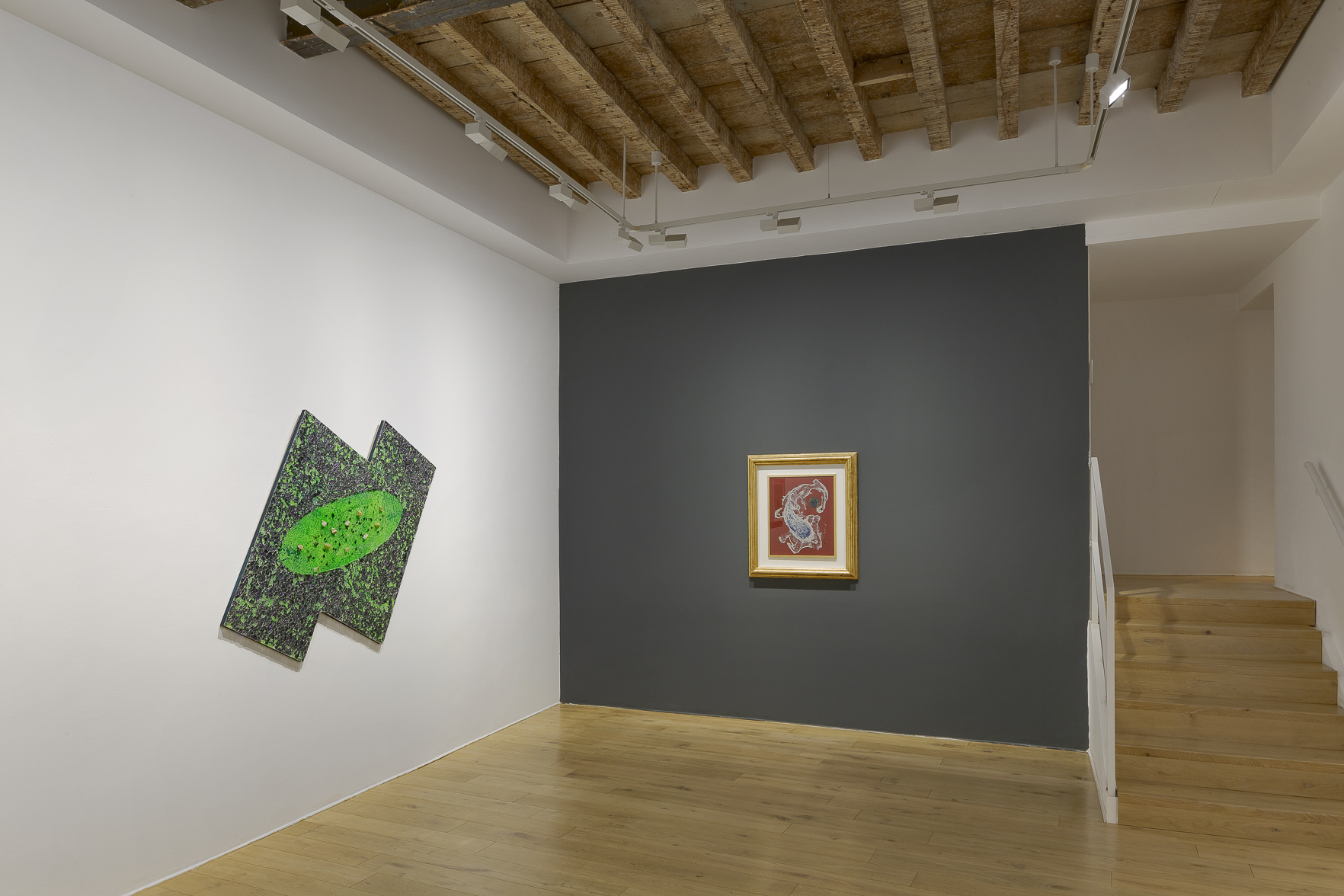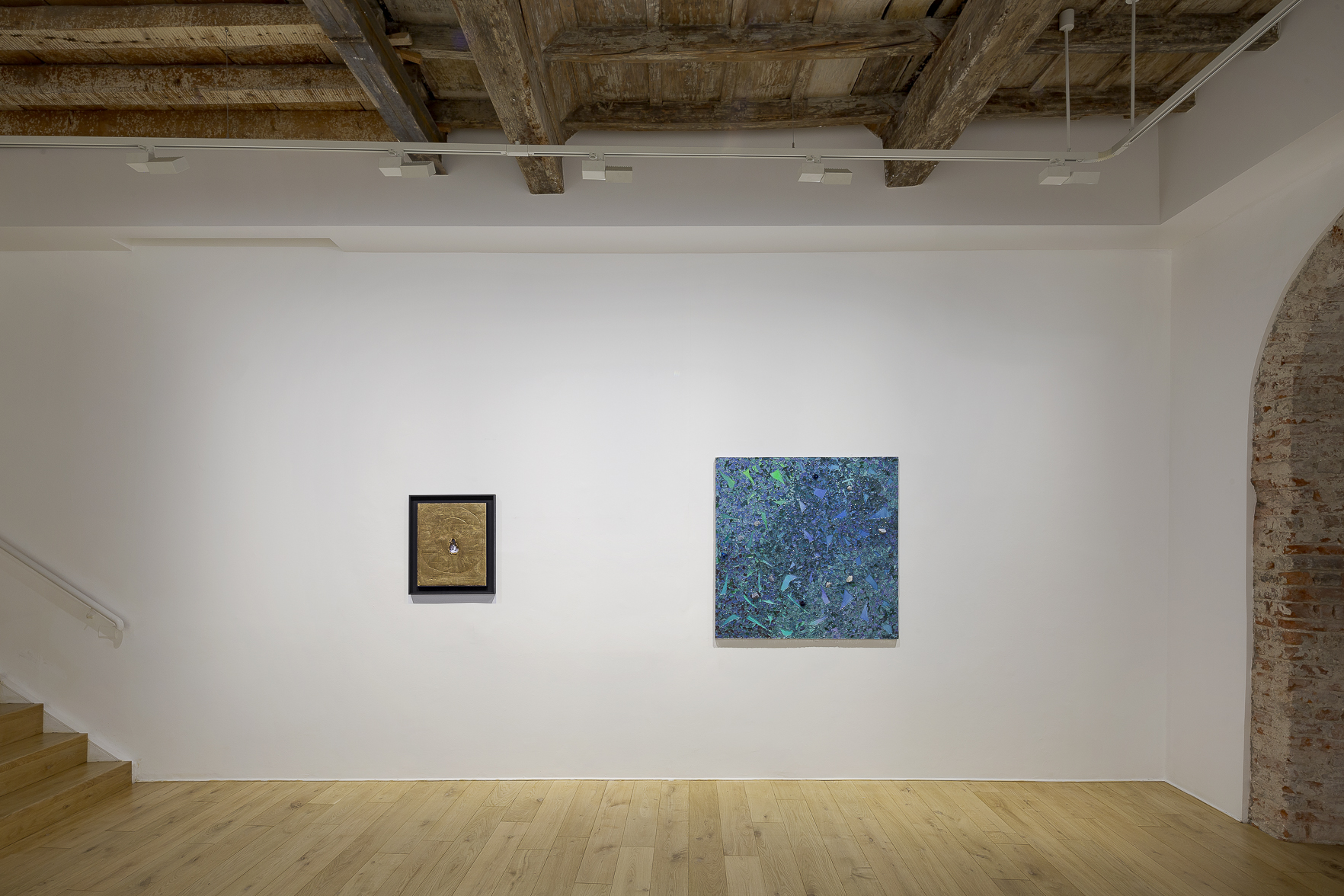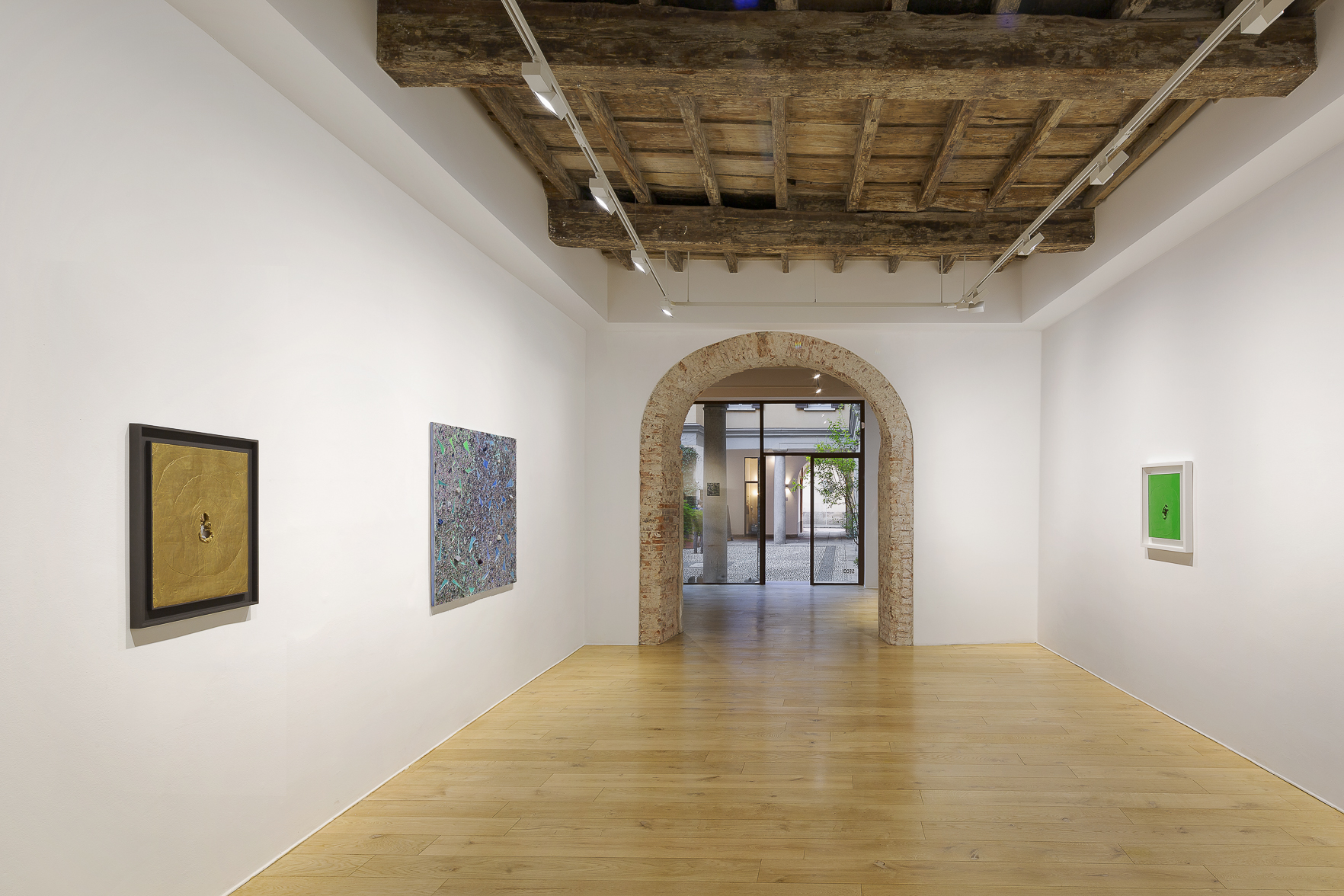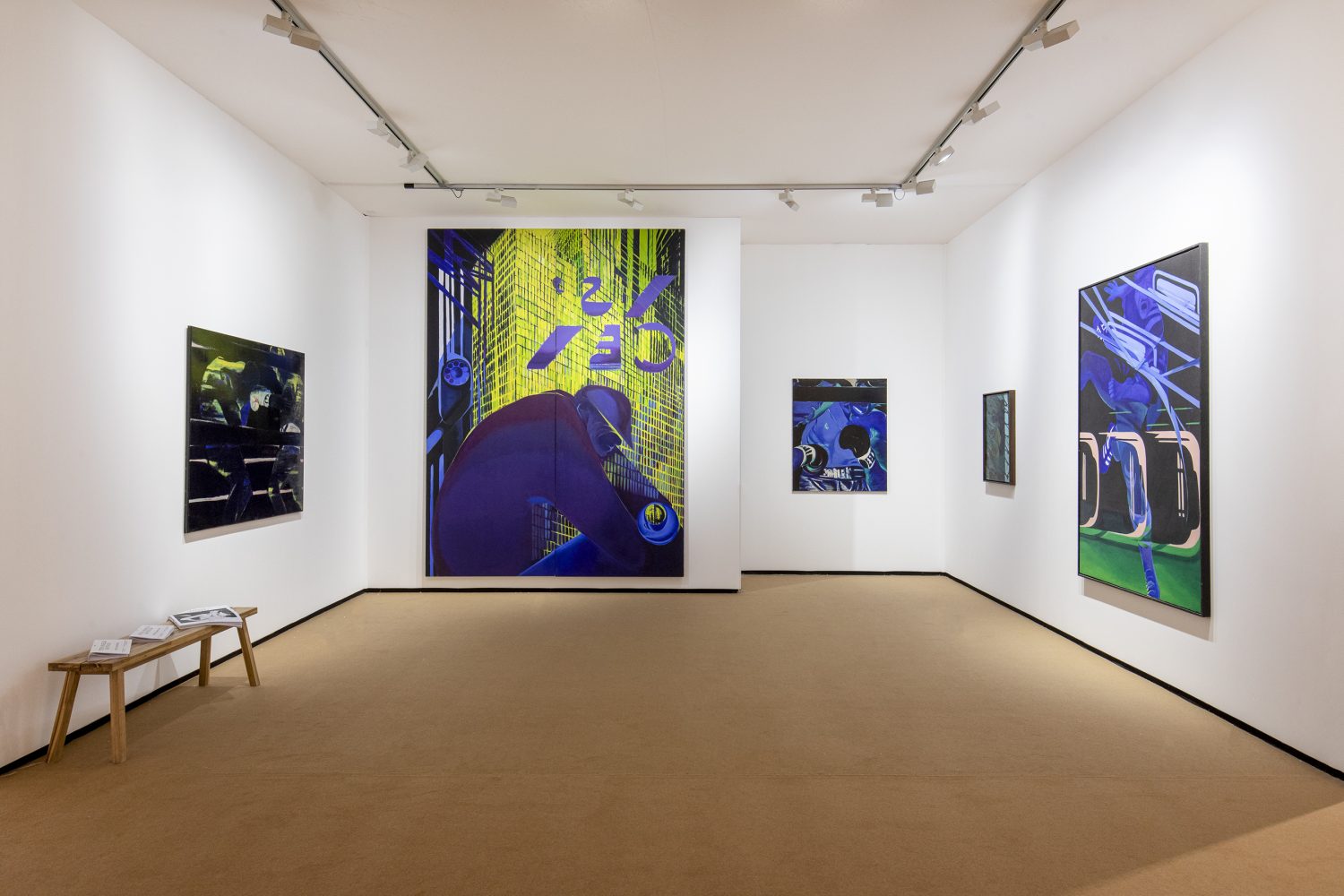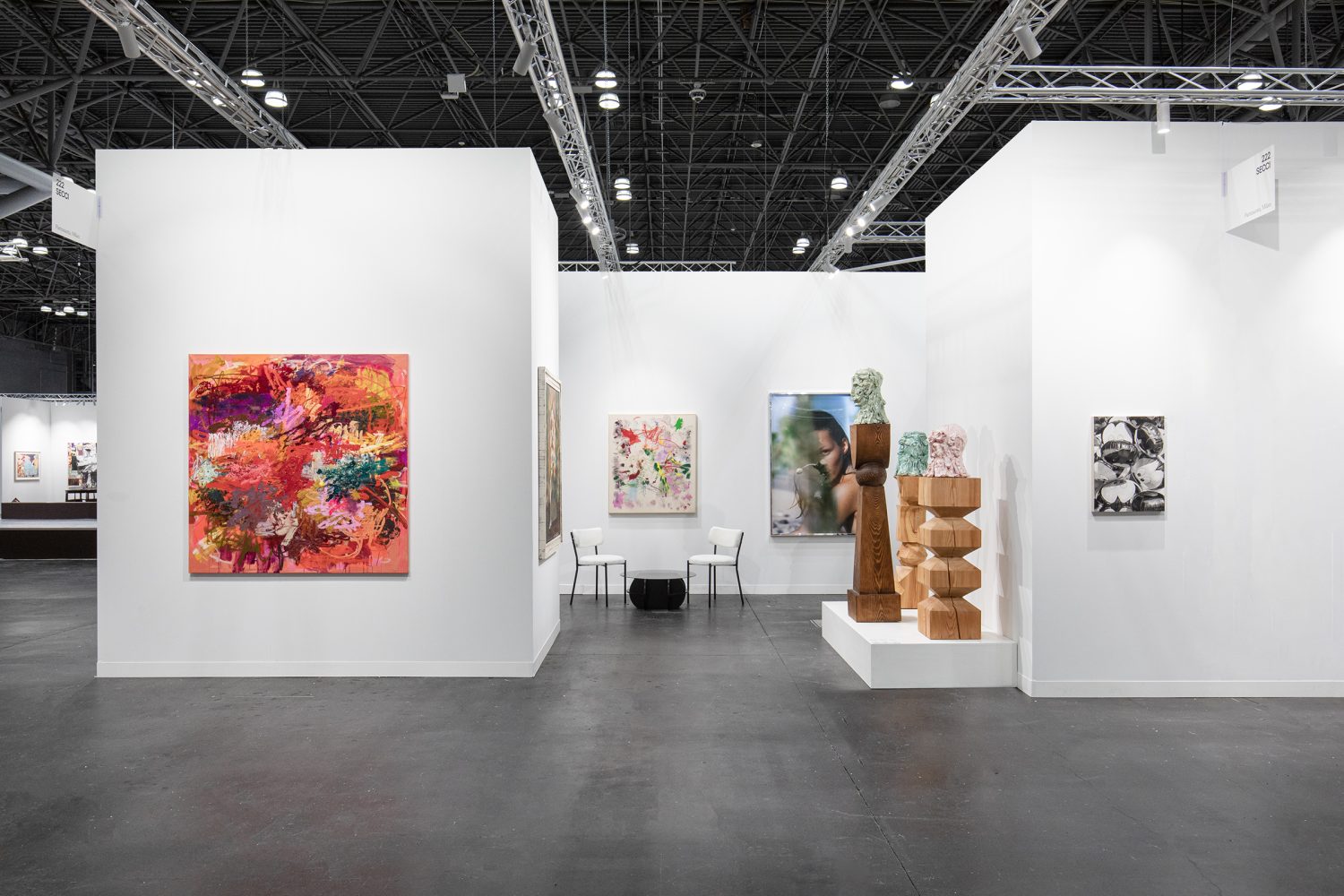A Material Dance: Lucio Fontana and Alteronce Gumby
A Material Dance brings together two artists separated by generations and continents yet united by their radical reimagining of painting’s physical possibilities. Lucio Fontana’s revolutionary Concetti Spaziali and Alteronce Gumby’s tactile glass paintings reveal a shared commitment to pushing beyond traditional artistic boundaries through direct material intervention.
The cosmological dimension of their work further binds these artists across time. Fontana’s precise cuts and punctures transformed the canvas from a passive surface into an active portal, creating an idea of infinity that challenged centuries of pictorial convention. His slashes weren’t acts of destruction but deliberate ruptures that invited viewers to experience space beyond the picture plane—a gesture toward the cosmos itself. Gumby’s interest in astrophysics and interstellar photography grounds his practice in similar universal concerns; his iridescent surfaces suggest nebulae and distant galaxies captured in resin and glass. In the work of both artists we see that true innovation requires not just new ideas but new ways of physically engaging with materials.
The exhibition reveals how each artist’s process becomes integral to meaning. Fontana’s methodical cuts create meditative openings that speak to spiritual transcendence and scientific possibility, while Gumby’s painted surfaces bear witness to the artist’s direct contact with his materials, creating what he describes as works that allow the viewer to see and feel the literal crafting behind each piece. This shared emphasis on process-as-content connects their practices across temporal and cultural divides.
Both artists demonstrate how materiality can expand perception. Fontana’s monochromatic surfaces, punctuated by voids, create infinite spatial possibilities within minimal means. Gumby’s chromatic spectrums of iridescent color achieve similar transcendence through his unique glass application, where darkness and light interweave to challenge traditional understandings of color and form. Their works function as optical and conceptual puzzles that demand active viewer engagement.
The pairing also highlights how unconventional techniques can carry profound social and philosophical weight. Fontana’s Spatialism sought to synthesize color, sound, space, movement, and time into a new artistic language for the modern era, embracing technology and scientific discovery. Gumby’s practice similarly pushes boundaries, but with explicit attention to how color’s and materials’ meanings and connotations relate to contemporary questions of self. His work continues Fontana’s tradition of using radical materiality to address urgent cultural questions.
What emerges most powerfully from this dialogue is how both artists understand the canvas not as a neutral ground but as a site of possibility requiring physical transformation. Fontana’s cuts opened painting to sculptural space and environmental experience, presaging installation art by decades. Gumby’s hands-on approach similarly refuses the distance traditionally maintained between artist and surface, creating paintings that vibrate with human presence and cultural urgency.
Together, these works demonstrate that true artistic innovation occurs not just in concept but in the brave physical act of making—whether through the decisive slice of a blade or the intimate pressure of fingers against glass and pigment. Both artists prove that materials themselves can be collaborators in expanding our understanding of what painting can be and do in the world.
-Dexter Wimberly
A Material Dance brings together two artists separated by generations and continents yet united by their radical reimagining of painting’s physical possibilities. Lucio Fontana’s revolutionary Concetti Spaziali and Alteronce Gumby’s tactile glass paintings reveal a shared commitment to pushing beyond traditional artistic boundaries through direct material intervention.
The cosmological dimension of their work further binds these artists across time. Fontana’s precise cuts and punctures transformed the canvas from a passive surface into an active portal, creating an idea of infinity that challenged centuries of pictorial convention. His slashes weren’t acts of destruction but deliberate ruptures that invited viewers to experience space beyond the picture plane—a gesture toward the cosmos itself. Gumby’s interest in astrophysics and interstellar photography grounds his practice in similar universal concerns; his iridescent surfaces suggest nebulae and distant galaxies captured in resin and glass. In the work of both artists we see that true innovation requires not just new ideas but new ways of physically engaging with materials.
The exhibition reveals how each artist’s process becomes integral to meaning. Fontana’s methodical cuts create meditative openings that speak to spiritual transcendence and scientific possibility, while Gumby’s painted surfaces bear witness to the artist’s direct contact with his materials, creating what he describes as works that allow the viewer to see and feel the literal crafting behind each piece. This shared emphasis on process-as-content connects their practices across temporal and cultural divides.
Both artists demonstrate how materiality can expand perception. Fontana’s monochromatic surfaces, punctuated by voids, create infinite spatial possibilities within minimal means. Gumby’s chromatic spectrums of iridescent color achieve similar transcendence through his unique glass application, where darkness and light interweave to challenge traditional understandings of color and form. Their works function as optical and conceptual puzzles that demand active viewer engagement.
The pairing also highlights how unconventional techniques can carry profound social and philosophical weight. Fontana’s Spatialism sought to synthesize color, sound, space, movement, and time into a new artistic language for the modern era, embracing technology and scientific discovery. Gumby’s practice similarly pushes boundaries, but with explicit attention to how color’s and materials’ meanings and connotations relate to contemporary questions of self. His work continues Fontana’s tradition of using radical materiality to address urgent cultural questions.
What emerges most powerfully from this dialogue is how both artists understand the canvas not as a neutral ground but as a site of possibility requiring physical transformation. Fontana’s cuts opened painting to sculptural space and environmental experience, presaging installation art by decades. Gumby’s hands-on approach similarly refuses the distance traditionally maintained between artist and surface, creating paintings that vibrate with human presence and cultural urgency.
Together, these works demonstrate that true artistic innovation occurs not just in concept but in the brave physical act of making—whether through the decisive slice of a blade or the intimate pressure of fingers against glass and pigment. Both artists prove that materials themselves can be collaborators in expanding our understanding of what painting can be and do in the world.
-Dexter Wimberly
